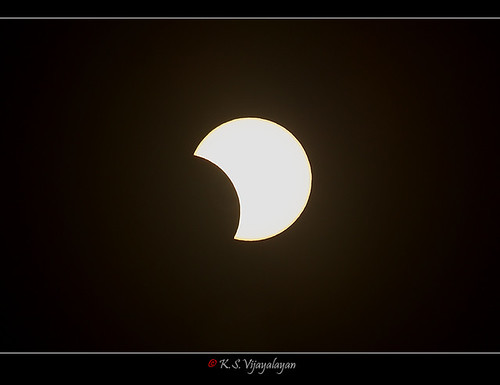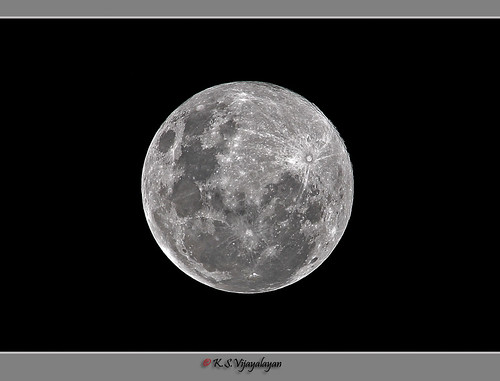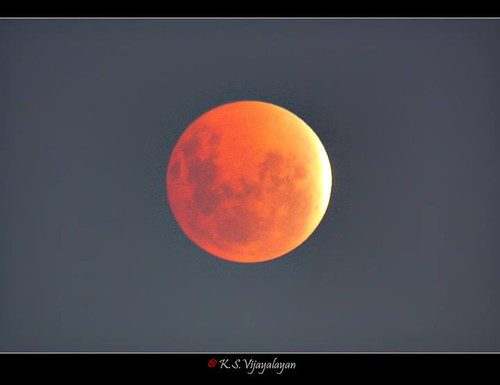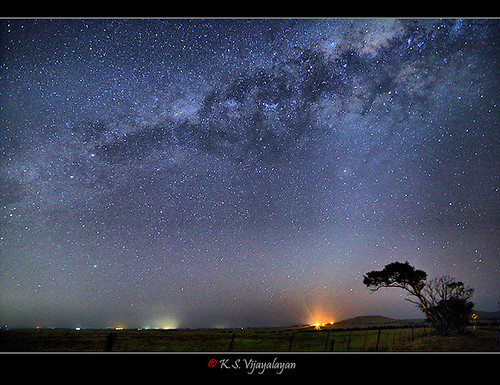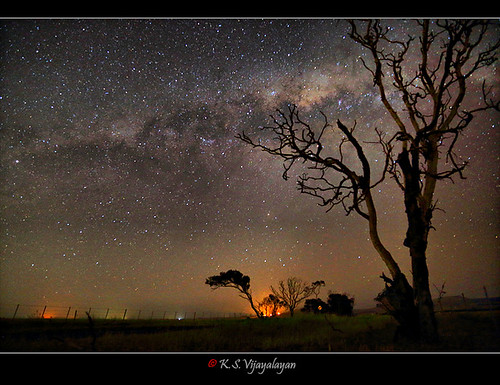An area without electricity also means no ambient light pollution affecting visibility of stars in the night sky. So, without a telescope I could gaze at star constellations, planets, comets, and milky-way just from our backyard. Unfortunately as we were displaced many of those interaction with the nature on daily basis could not be continued, but the passion remained.
Partial solar eclipse at 8:53 am on 10-05-2013
Yet, whenever I come across any news about an astronomical event I note it down and try my best to observe it first hand. Eventually I started photographing these events like what I did with watching birds. The telephoto lenses I bought primarily to shoot birds became very much handy for astrophotography as well.
Super Moon on 23-06-2013
Being a resident of a metropolitan area light pollution is a serious problem for my astrophotography attempts, and I could only shoot the sun and the moon. Even though I could see few hands full of stars and sometimes planets in the night sky, no keep worthy photographs of stars or planets could be captured from my home.
Blood moon lunar eclipse
Inspired by some of the amazing shots of milky-way and star trails found on the internet, I decided to give milky-way shoot a try. Another phototog sitting in the same cubicle in my office also wished join. So, we started digging for information such as camera settings and location selection criteria during our lunch breaks. We found a map showing ambience light pollution in night around Victoria to chose some possible regions. My previous exploration of far west suburbs of Melbourne in search of canola fields helped me to narrow down shooting locations with some interesting foreground subjects. Next we focused on weather forecast for a clear and no moon day falling close to a week-end.
First glimpse of the Milky-way after many years
We set on a Friday evening to the shooting location well before the sunset, chose two spots, scouted around both spots, fine-tuned the shooting plans, setup tripod at one of the locations, and waited for the night to fall. Some beautiful twilight shots turned out to be bonus for our waiting. As darkness covered the sky the milky-way became visible and we started shooting. I had lots of trials and errors to determine the final camera settings and playing with manual focus. Once I became confident with camera settings, I concentrated on different compositions and foreground subjects. We did not realise how much time we had spent at the first location until one of us cared check time. It was 11:00 pm already.
Milky-way with a skeleton tree foreground
We left for the second location, our favourite one, with a small pond and a windmill about a kilometre away from the first location. Though we scouted the location just in the evening, we missed the spot in the pitch darkness and drove past. It took a while realise, took a U-turn, drove very slowly, and managed to spot the location. Parked the car, waited for few minutes to train our eyes for the darkness, and reached the bank of the pond scaring some bunnies into the bushes. Experimented few more night photography tricks and took some satisfying shots. By the time we decided to return, it was 1:00 am. While packing the gears only we realised that we haven’t had our dinner, but who cares when you have had such a blast.

